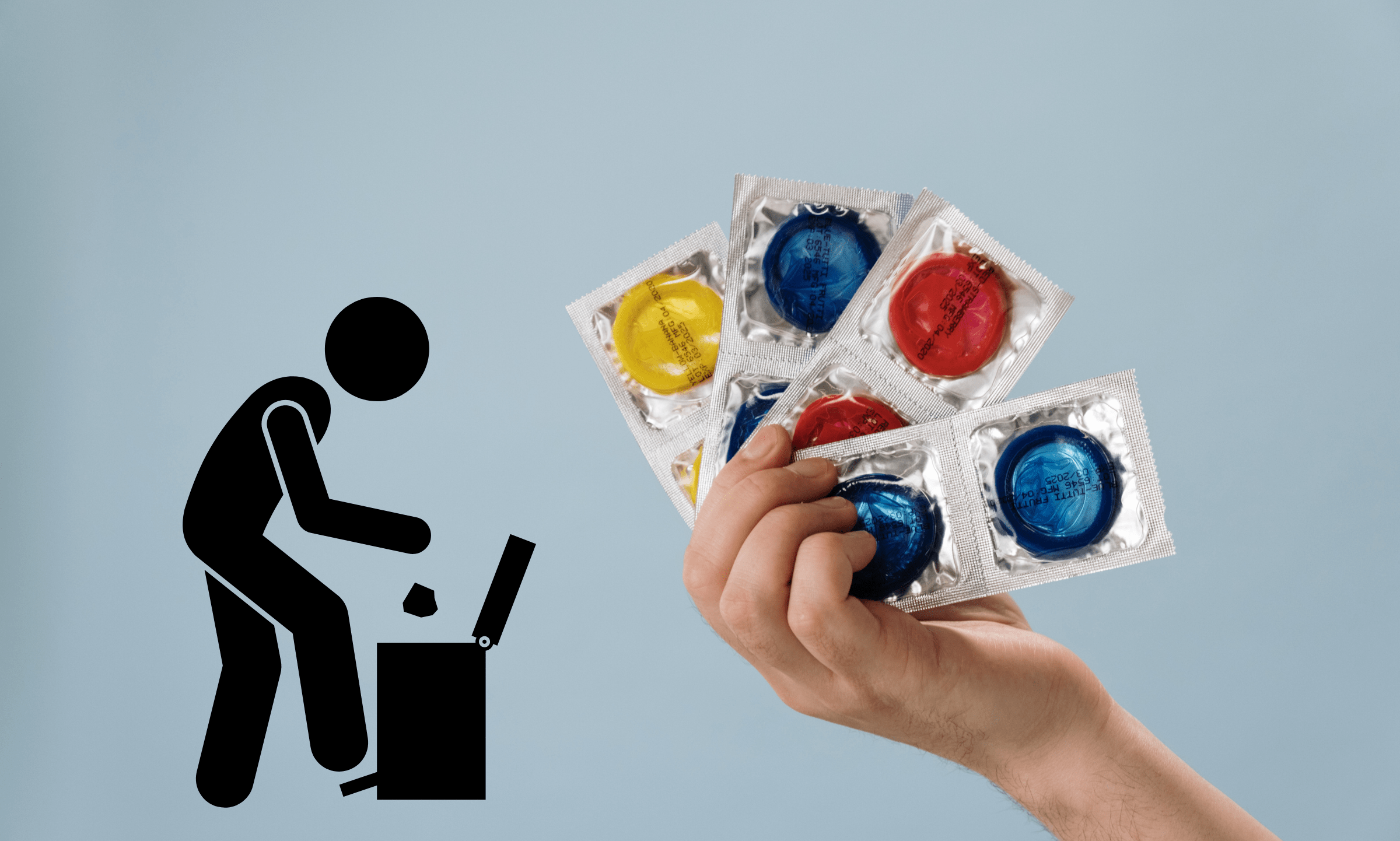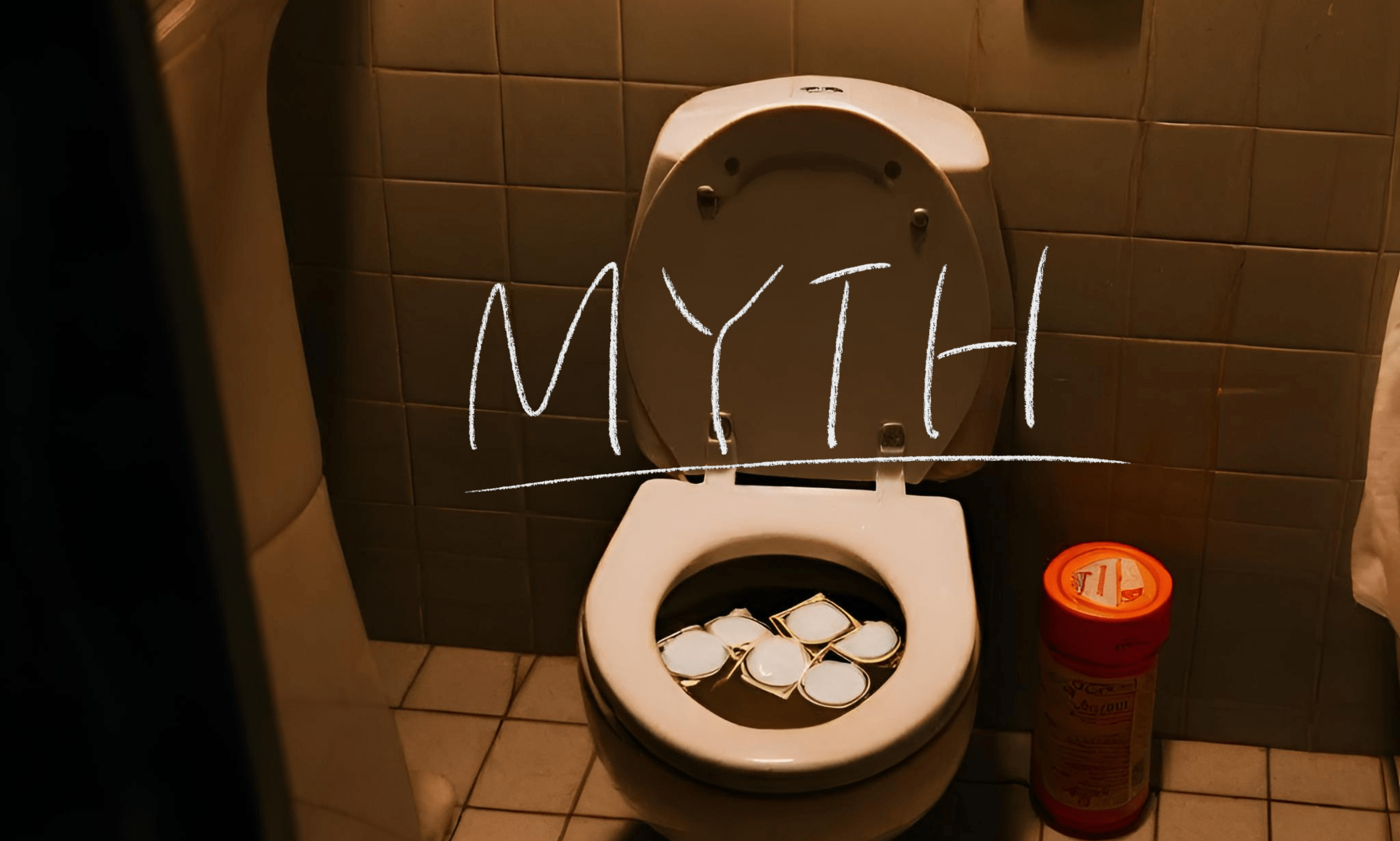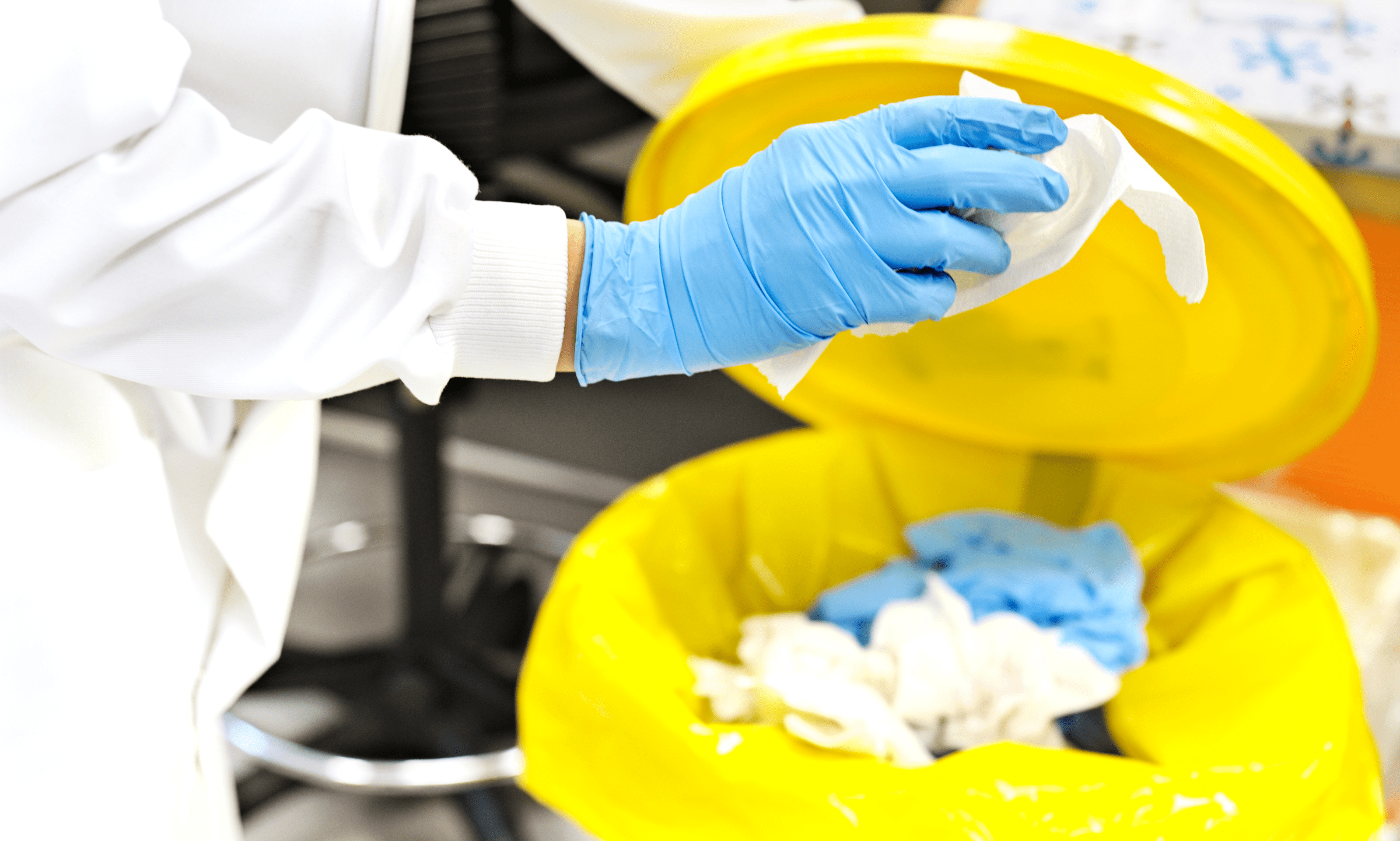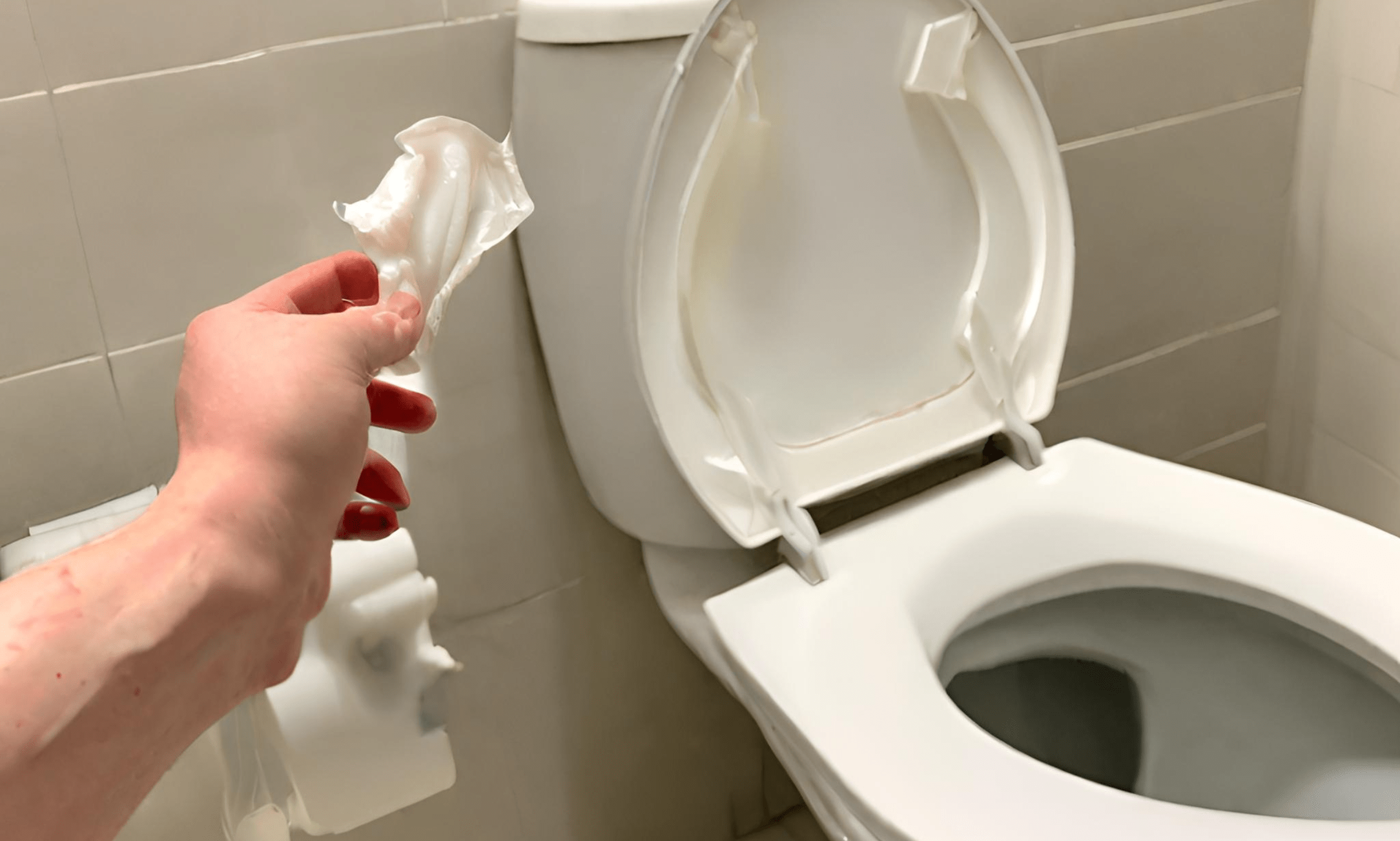Understanding the Risks: Why Flushing Condoms Might Not Be Safe
The Environmental Impact of Flushing Condoms
Flushing condoms down the toilet may seem like a convenient disposal method, but it poses significant risks to the environment. Condoms are typically made of latex or synthetic materials, which are not biodegradable. When flushed, condoms can end up in water bodies, where they contribute to marine pollution. Additionally, condoms can entangle aquatic life and pose a threat to their well-being.
Potential Plumbing Problems and Risks to Sewer Systems
Flushing condoms can also lead to plumbing issues and costly repairs. Condoms are designed to be durable and flexible, making them resistant to breakdown in water. As a result, they can easily clog pipes and sewer systems, leading to blockages and backups. Over time, accumulated condoms and other debris can cause extensive damage to sewer infrastructure, necessitating expensive repairs and maintenance.
Public Health Concerns: Impact on Water Treatment Facilities
Flushing condoms can have serious consequences for water treatment facilities and public health. Condoms that make their way into wastewater systems can interfere with treatment processes, leading to inefficiencies and increased operational costs. Moreover, the presence of condoms and other non-biodegradable items in wastewater can compromise water quality and pose health risks to communities that rely on treated water for drinking and recreational purposes.

Proper Disposal Methods: How to Safely Dispose of Condoms
Trash vs. Toilet: The Recommended Disposal Method
The safest and most environmentally responsible way to dispose of condoms is by throwing them in the trash. After use, wrap the condom in tissue or toilet paper to prevent exposure to bodily fluids, then securely tie the package before placing it in the trash bin. This ensures that condoms are properly contained and disposed of in a sanitary manner, minimizing the risk of exposure to harmful pathogens.
Encouraging Responsible Disposal Practices
Educating individuals about the importance of responsible condom disposal is essential for promoting environmental sustainability and public health. Encourage users to adopt eco-friendly disposal habits by providing information on the risks associated with flushing condoms and the benefits of proper disposal methods. Emphasize the importance of personal responsibility and collective action in preserving natural resources and protecting water ecosystems from pollution.
Eco-Friendly Alternatives for Condom Disposal
In addition to throwing condoms in the trash, there are several eco-friendly disposal alternatives to consider. Some condom brands offer biodegradable options made from natural materials that break down more easily in the environment. Alternatively, individuals can explore reusable condom options, such as silicone-based products, which can be cleaned and reused multiple times, reducing waste generation and environmental impact. By choosing sustainable condom disposal methods, individuals can contribute to conservation efforts and minimize their ecological footprint.

Myth vs. Reality: Debunking Common Misconceptions About Flushing Condoms
Myth: Condoms Are Biodegradable and Safe to Flush
Many people mistakenly believe that condoms are biodegradable and can be safely flushed down the toilet. However, this is not the case. Condoms are typically made of latex or synthetic materials, which are non-biodegradable and can persist in the environment for years. Flushing condoms can lead to environmental pollution, plumbing problems, and risks to public health, making them an unsafe disposal method.
Reality: The Dangers of Flushing Condoms Down the Toilet
In reality, flushing condoms poses significant risks to the environment, sewer systems, and public health. Condoms can clog pipes and wastewater treatment facilities, leading to costly repairs and operational inefficiencies. Moreover, condoms that end up in water bodies can harm aquatic life and degrade water quality, posing risks to ecosystems and human health. It’s essential to dispel myths surrounding condom disposal practices and promote responsible alternatives to minimize environmental impact and protect community well-being.
Dispelling Myths Surrounding Condom Disposal Practices
By dispelling myths surrounding condom disposal practices and providing accurate information on the risks associated with flushing condoms, individuals can make informed decisions and adopt responsible disposal habits. Emphasize the importance of proper condom disposal in preserving environmental integrity and safeguarding public health. Encourage open dialogue and education on sustainable waste management practices to empower individuals to take action and contribute to positive environmental outcomes.

Environmental Impact: The Consequences of Improper Condom Disposal
Marine Pollution and Threats to Aquatic Life
Improper condom disposal, such as flushing them down the toilet, can contribute to marine pollution and threaten aquatic life. Condoms that end up in water bodies can entangle marine animals, such as fish, turtles, and seabirds, leading to injury or death. Additionally, condoms can release harmful chemicals as they degrade, further compromising water quality and ecosystem health. By minimizing plastic pollution from condoms and other waste items, we can help protect marine habitats and biodiversity.
Microplastics and Environmental Contamination
Condoms are made of synthetic materials, such as latex and polyurethane, which can degrade into microplastics over time. Microplastics are tiny plastic particles that can accumulate in the environment, posing risks to wildlife and human health. When flushed down the toilet, condoms contribute to the proliferation of microplastics in water bodies, soil, and air, exacerbating environmental contamination. By adopting responsible condom disposal practices and reducing plastic waste generation, we can mitigate the spread of microplastics and protect ecosystems from harmful pollutants.
Sustainable Alternatives to Reduce Condom-Related Waste
To minimize the environmental impact of condom disposal, individuals can explore sustainable alternatives and eco-friendly options. Some condom brands offer biodegradable or compostable products made from natural materials, such as natural rubber latex or sheepskin. These condoms break down more easily in the environment, reducing long-term pollution and ecological harm. Additionally, reusable condom options, such as silicone-based or latex-free condoms, offer a more sustainable alternative to single-use disposable products, helping to reduce waste generation and conserve natural resources. By choosing environmentally friendly condom options and practicing responsible disposal habits, individuals can contribute to conservation efforts and promote a healthier planet for future generations.

Promoting Awareness: Educating Others on Responsible Condom Disposal
The Importance of Comprehensive Sex Education
Comprehensive sex education plays a crucial role in promoting responsible condom use and disposal practices. By providing accurate information on sexual health, contraception, and safe disposal methods, educators can empower individuals to make informed decisions and adopt healthy behaviors. Incorporate discussions on condom disposal into sex education curricula, emphasizing the importance of environmental sustainability, public health, and personal responsibility.
Advocating for Safe and Environmentally Friendly Practices
Advocacy efforts can help raise awareness of the environmental and public health impacts of improper condom disposal and promote safe and environmentally friendly practices. Collaborate with environmental organizations, public health agencies, and community groups to develop educational campaigns, outreach initiatives, and policy proposals aimed at addressing condom-related waste issues. By advocating for sustainable solutions and supporting initiatives that promote responsible condom disposal, advocates can help protect ecosystems, preserve natural resources, and improve community well-being.
Spreading Awareness Through Social Media and Community Outreach
Social media platforms and community outreach events offer valuable opportunities to spread awareness of responsible condom disposal practices and engage with diverse audiences. Create informative and engaging content, such as infographics, videos, and blog posts, highlighting the environmental consequences of flushing condoms and the importance of proper disposal methods. Partner with influencers, activists, and organizations to amplify your message and reach a broader audience. By leveraging social media and community outreach efforts,















